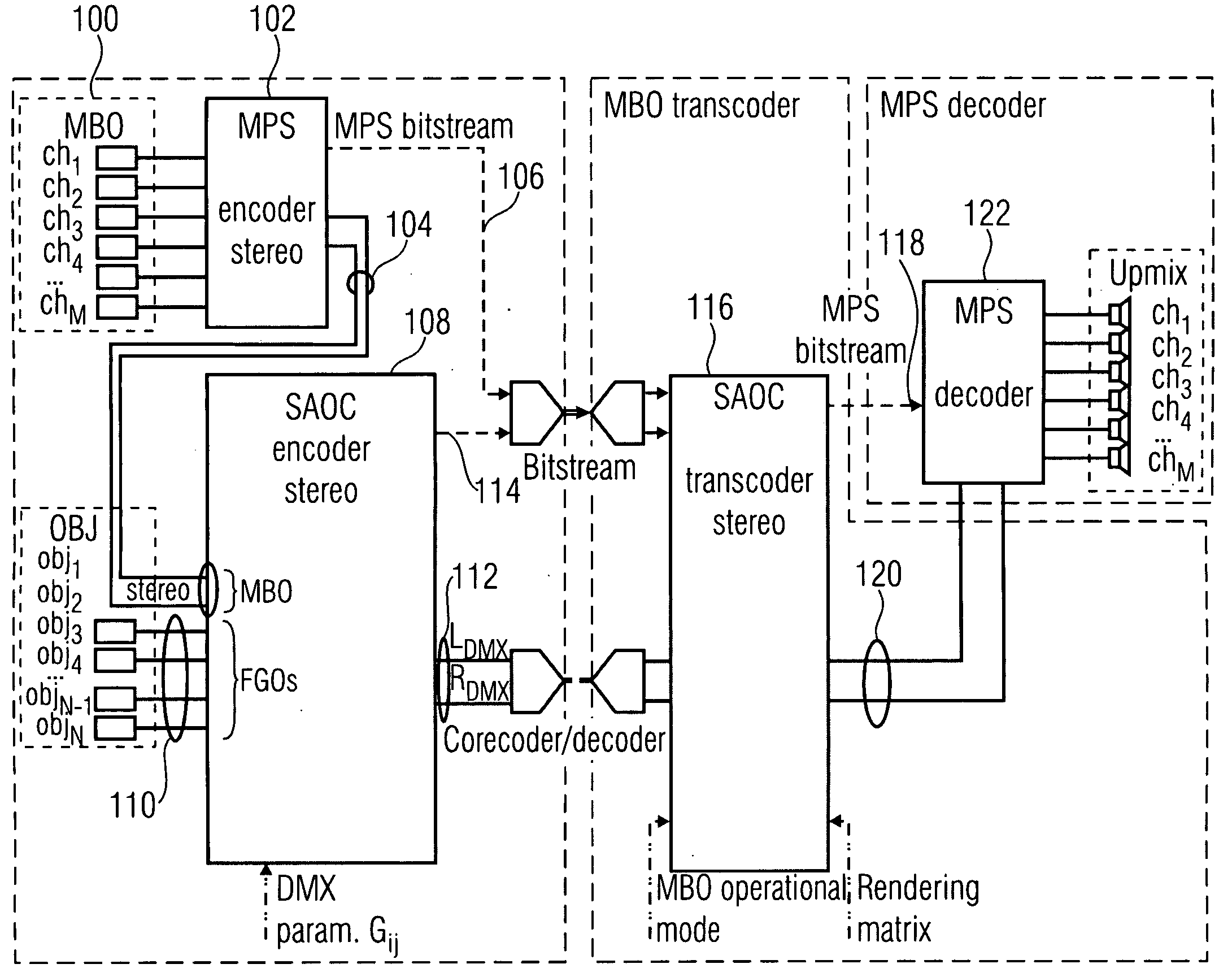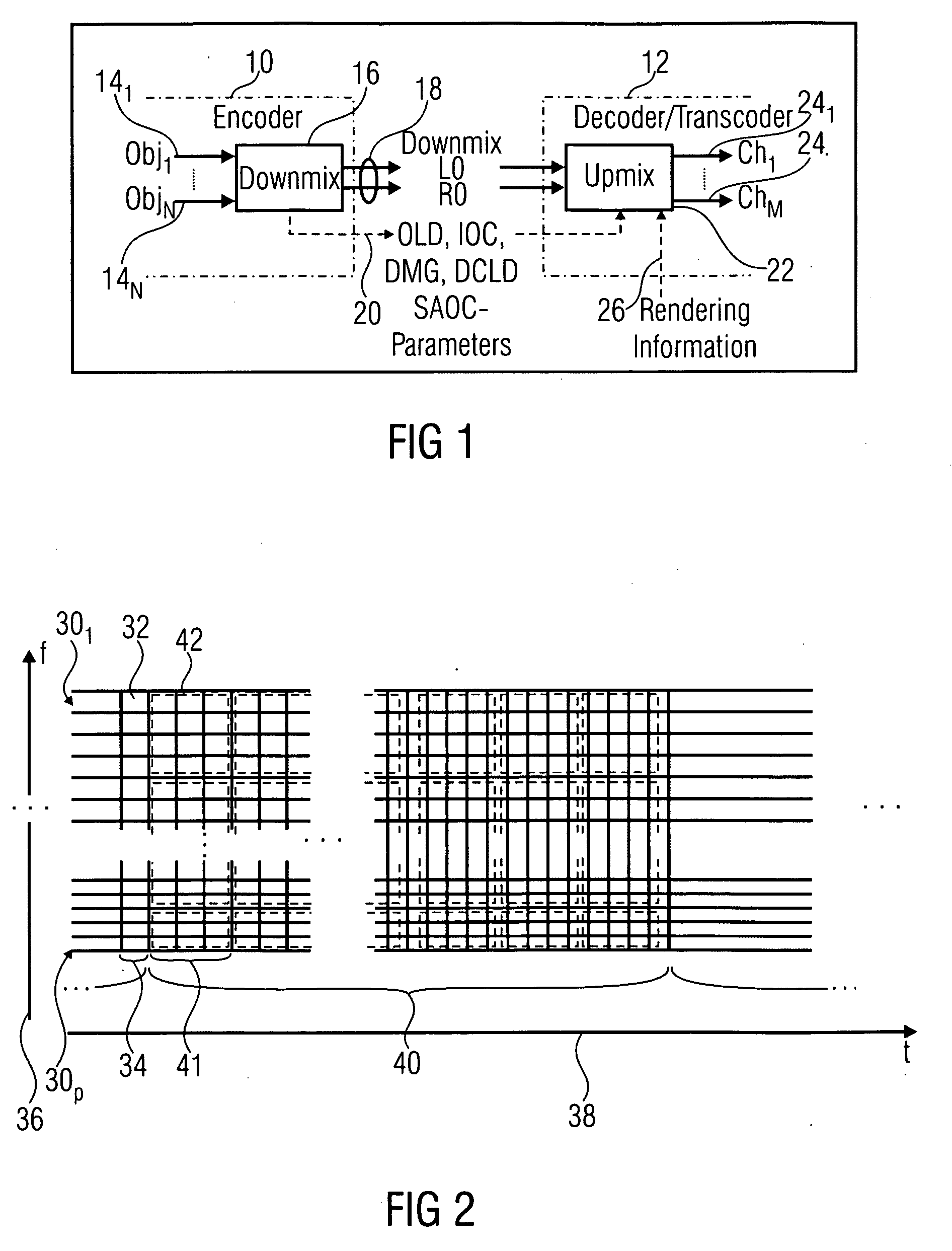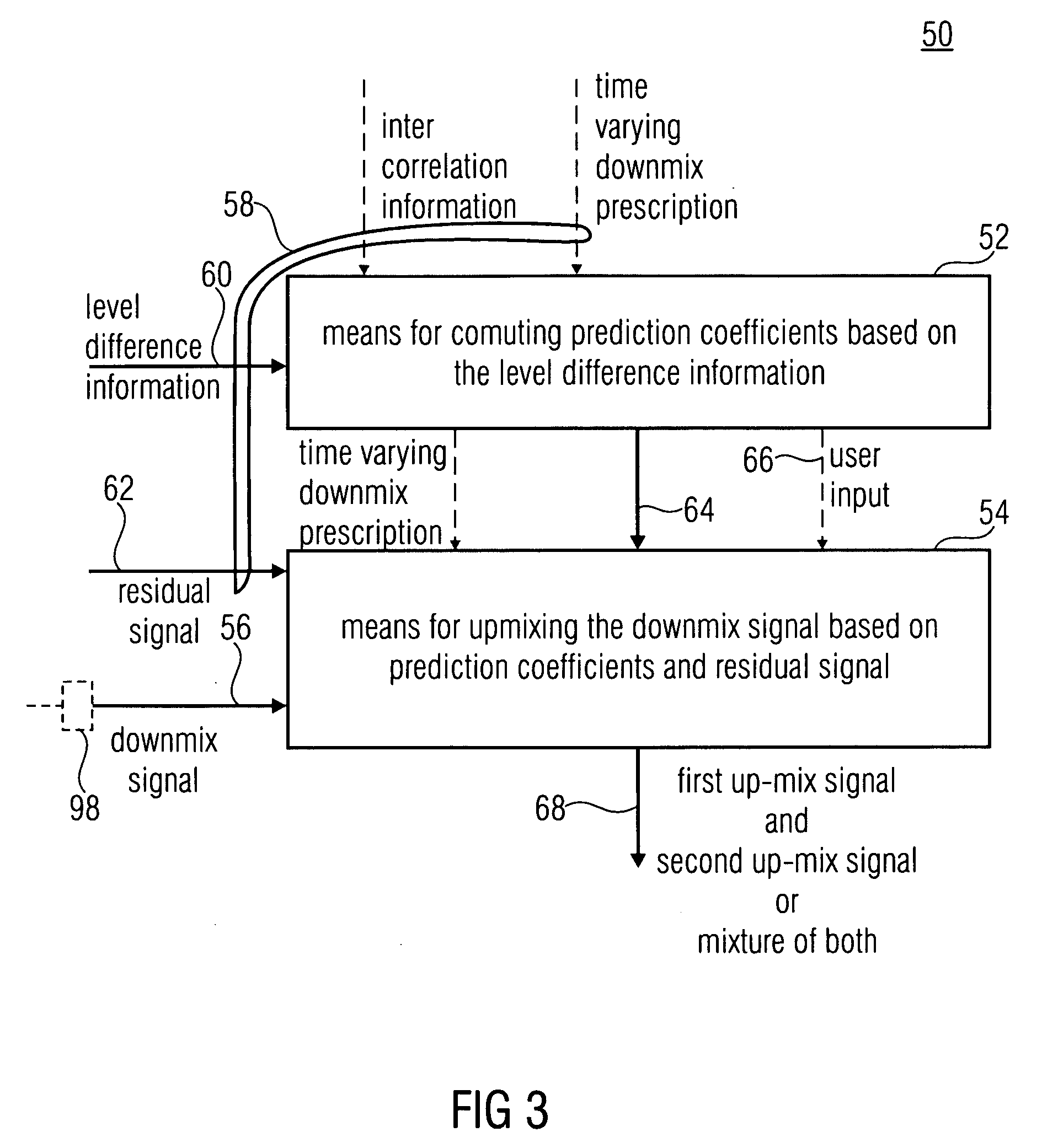Audio coding using upmix
a technology of upmix and audio coding, applied in the field of audio coding, can solve the problems of mpeg surround, unable to meet all the requirements of many applications, and upcoming applications pose further demands on audio coding algorithms,
- Summary
- Abstract
- Description
- Claims
- Application Information
AI Technical Summary
Benefits of technology
Problems solved by technology
Method used
Image
Examples
Embodiment Construction
[0030]Before embodiments of the present invention are described in more detail below, the SAOC codec and the SAOC parameters transmitted in an SAOC bitstream are presented in order to ease the understanding of the specific embodiments outlined in further detail below.
[0031]FIG. 1 shows a general arrangement of an SAOC encoder 10 and an SAOC decoder 12. The SAOC encoder 10 receives as an input N objects, i.e., audio signals 141 to 14N. In particular, the encoder 10 comprises a downmixer 16 which receives the audio signals 141 to 14N and downmixes same to a downmix signal 18. In FIG. 1, the downmix signal is exemplarily shown as a stereo downmix signal. However, a mono downmix signal is possible as well. The channels of the stereo downmix signal 18 are denoted L0 and R0, in case of a mono downmix same is simply denoted L0. In order to enable the SAOC decoder 12 to recover the individual objects 141 to 14N, downmixer 16 provides the SAOC decoder 12 with side information including SAOC-...
PUM
 Login to View More
Login to View More Abstract
Description
Claims
Application Information
 Login to View More
Login to View More - R&D
- Intellectual Property
- Life Sciences
- Materials
- Tech Scout
- Unparalleled Data Quality
- Higher Quality Content
- 60% Fewer Hallucinations
Browse by: Latest US Patents, China's latest patents, Technical Efficacy Thesaurus, Application Domain, Technology Topic, Popular Technical Reports.
© 2025 PatSnap. All rights reserved.Legal|Privacy policy|Modern Slavery Act Transparency Statement|Sitemap|About US| Contact US: help@patsnap.com



